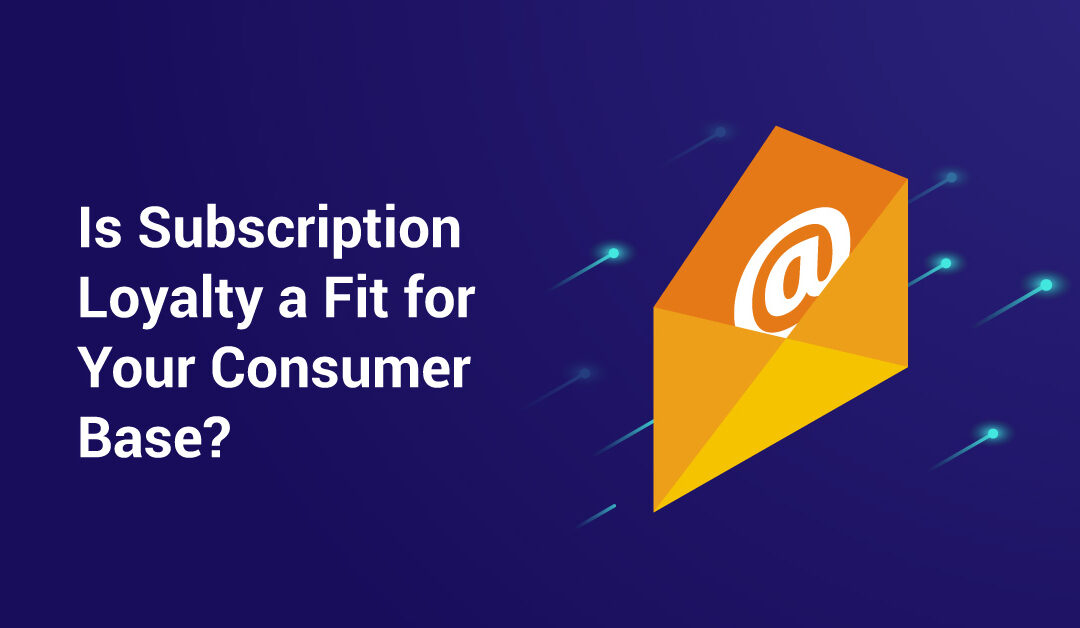There’s an axiom that guides the evolution of consumer engagement: as technology evolves, so too does the consumer relationship. This phenomenon compounded with the fact that, amid our current climate, consumers have become hyper-conscious of their physical relationship with brands, signifies that the rate at which consumer expectations are evolving will continue to accelerate. Consumers, more than ever, are re-thinking the process through which they buy fuel and consumer packaged goods, and the brands that wish to stay competitive must reconsider their delivery against those expectations.
In evaluating a competitive market approach, convenience and fuel retailers will undoubtedly encounter countless trends and sleek technologies to gauge for fit against their business models. Of the many consumer engagement approaches that warrant a deeper inspection, merchants must not overlook the rising consumer interest in subscription-based relationships. In this article, the first in our two-part series on subscription loyalty in convenience and retail fuel, we’ll address how to go about evaluating whether a paid tier is right for your program.
The Rise of Paid Membership Models
The usage of tier-based incentives unlocked via program engagement has long served convenience and retail fuel loyalty programs. Several of the leading programs in the ecosystem offer activity based tiering that provides a bonus multiplier to consumers who complete a specified activity within a given timeframe (for examples, see Premium Status from ExxonMobil’s “Exxon Mobil Rewards+” or Gold Status from Fuel Rewards Network that Shell participates in).
In a loyalty program that leverages subscription (either as stand-alone or as a complimentary engagement strategy), rather than retailer-specified actions determining access, the consumer can unlock exclusive benefits through their participation in recurring payment models (models that target consumers likely take advantage of in their non-fuel purchasing patterns today). Evidenced by the fact that Amazon Prime hit the 150-million member mark earlier this year, the subscription member model has surpassed the tipping point of mass adoption in general retail. Both Burger King and Panera have already targeted morning commuters with their respective BK Café and MyPanera+ coffee subscription programs. Streaming providers and credit card issuers alike have adopted a recurring payments model as a seamless way to offer services, while organizations like Stitch Fix and Dollar Shave Club have made subscription their business model, affecting not just to the way that a consumer pays, but to the way that a consumer incorporates these brands into their everyday lives.
Select Benefits of Subscription Loyalty
The popularity of the above-cited programs signals a base level of consumer comfort with the paid subscription model. In short, consumers are not only ready for such a relationship in convenience and retail fuel, but likely may expect such an offering to be available.
On a surface-level, consumers understand that their recurring payment can unlock enhanced program features, thus creating a perception of exclusivity. Beneath that surface level, however, the prospect of consumer choice can be far more impactful. Consumers like, and increasingly expect, control in their interactions whether that be in the form of value, exclusivity, service or otherwise. Greater optionality equates to customer empowerment, rather than forcing consumers to jump through hoops to unlock a reward lacking in differentiation.
In thinking about how technological innovation has influenced the consumer relationship, perhaps the most pervasive change has been the expectation of immediate gratification (consumers pay the premium of Amazon Prime because they know the competition cannot guarantee a two-day shipping timeframe). The RaceTrac Rewards VIP program does a good job of demonstrating instant savings as a value proposition— by allowing consumers to instantly unlock program benefits with payment remittance, rather than making them feel as though they’re working toward benefits through activity-based earning, merchants can begin to provide their consumers with the instantaneous feeling of having derived value from a program’s loyalty offering.
Delivering Incremental Value
When evaluating whether a paid loyalty model is a fit for your consumer base, there’s one important qualifier that should underpin this conversation— simply charging for a more discounted loyalty program does not constitute a subscription-based loyalty offer. In a true subscription-based program, consumers pay to unlock value that they otherwise would not have access to. Whether this value arrives in the form access to exclusive inventory or premium service features, the overall experience provided must deliver incremental benefits to consumers such that they continue to feel validated in paying the premium to engage with your brand in this specialized fashion. In this sense, it is imperative that merchants educate themselves before they choose to leverage subscription engagement strategies. As with implementing any program, success requires more than the mere introduction of a different payment model— success is contingent on building the right subscription offer, custom-tailored to your target consumers.
The value for merchants, of course, lives within the retention. Subscription models inherently attract consumers who are interested in establishing a long-term relationship, thereby reducing overhead associated with the acquisition costs of enrolling consumers who might only join a program for enticing introductory offers. This built-in revenue model also facilitates financial forecasting for the merchant. While revenue modeling will of course remain reliant on realistic forecasts, the average anticipated value per subscription program member becomes a stable figure in program models.
Perhaps the greatest inherent advantage to the paid subscription model is that the up-front commitment obtained in the form of a payment remittance affords the merchant flexibility to explore new ways of delivering value. In the end, however, we must not forget the axiom we started with— the success of all consumer engagement will depend upon the merchant’s understanding of consumers’ fundamental expectations.
For further discussion around what a subscription manager software can do for your organization, contact [email protected].

